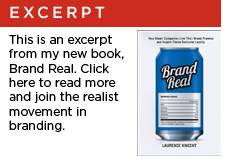Reading Time: About 2 minutes
Think of memory as a two-way street. First, memory is about storage. Your memory is a place to file away information for later use. Unfortunately, your brain can’t remember everything. If you tried to store every experience, every idea, and every mundane piece of data that you encounter in your life, you would quickly exhaust your supply of brain cells. That’s why your brain is selective. It filters through all the information that streams by you in a day, and it uses clever rules to decide which information is worth storing in memory. To win the memory game, a brand’s first priority is to pass the brain’s fitness test and earn a lease on some memory cells.
 Storage is only half the battle, though. Each of us stores a lot of information in memory that we seldom retrieve. It’s called forgetting. You know how it goes. Suppose you’re casually rifling through your closet and you come across a shirt you’d totally forgotten. Now that it is in plain sight, maybe you remember when and where you bought it, or maybe you remember odd little details and emotions from the last time you wore it. These memories flow into your stream of consciousness with little effort. All it took was a simple reminder—a cue. Until you were cued, the shirt was out of sight and out of mind. But the cue unlocked memorized information about the shirt. How well a brand is retrieved from memory is a critically important factor when you play the memory game. We forget about a lot of brands we encounter, but that doesn’t mean they don’t get stored in memory. It just means they aren’t top of mind. An effective brand is easy for us to store in memory and hard to forget.
Storage is only half the battle, though. Each of us stores a lot of information in memory that we seldom retrieve. It’s called forgetting. You know how it goes. Suppose you’re casually rifling through your closet and you come across a shirt you’d totally forgotten. Now that it is in plain sight, maybe you remember when and where you bought it, or maybe you remember odd little details and emotions from the last time you wore it. These memories flow into your stream of consciousness with little effort. All it took was a simple reminder—a cue. Until you were cued, the shirt was out of sight and out of mind. But the cue unlocked memorized information about the shirt. How well a brand is retrieved from memory is a critically important factor when you play the memory game. We forget about a lot of brands we encounter, but that doesn’t mean they don’t get stored in memory. It just means they aren’t top of mind. An effective brand is easy for us to store in memory and hard to forget.
If you want to win the memory game, you need to answer three important questions:
- What is it about my brand that will make it easy to memorize?
- What can I do to ensure my brand sticks in a consumer’s long-term memory?
- How do I encourage a consumer’s brain to recall my brand at relevant moments in time?
Fortunately, there’s good science to help you answer these questions. For starters, we know that associating a brand with a concrete idea makes it more likely to be understood and stored in someone’s memory. Concrete ideas are specific. They connect to concepts we already know and understand. They are tangible, not abstract. We’ll talk more about them in a moment.
Once you’ve defined your brand concretely, repeated exposure improves its chance of making its way into the consumer’s long-term memory. Repetition plays an important role in making a brand top of mind.
Finally, the brands that are recalled most often are connected to a consistent system of cues. Variety might be the spice of life, but to ensure the highest rate of memory retrieval, real brands help us connect dots. Through consistency, they use cues that trigger a chain reaction of memory retrieval that reminds us why the brand really matters to us. Specificity, repetition, and consistency are the ingredients of brands that win the memory game. It may sound like common sense, but if you do a quick survey of the branding universe you’ll find a lot of brands that ignore the rules and end up ignored.

